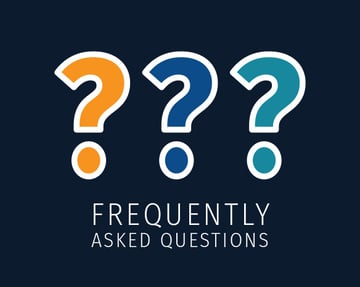Last May, the FDA announced an extension to the original Menu Labeling compliance date, giving restaurants and other qualifying food establishments another year to redo their menus and menu boards. The new date is fast approaching, and you still have some concerns. This blog answers the questions our customers have recently asked.
Compliance date and who is impacted
Q: What is the compliance date for menu board labeling?
A: May 2017, based on comments received, FDA is extending the compliance date for menu labeling requirements from May 5, 2017, to May 7, 2018.
Q: Is my establishment required to comply with FDA menu labeling regulations?
You must comply with menu labeling regulations if your establishment meets all four criteria for a “covered establishment.” The menu labeling final rule defines a “covered establishment” as a restaurant or similar retail food business that:
- Has 20 or more locations (with the term location referring to a fixed position or site);
- Is doing business under the same name (regardless of the type of ownership, such as individual franchises). When the term “name” refers to the name of the establishment presented to the public, the term “same” includes names that are slight variations of each other, due to things such as the region, location, or size (e.g., “ABC” and “ABC Express”);
- Sells substantially the same menu items; and
- Sells restaurant-type foods (defined, in part, as food that is usually eaten on the premises, while walking away, or soon after arriving at another location).
Q: Are food trucks required to comply with menu labeling regulations?
A: Food trucks are exempt because they do not meet the criteria for a “fixed-position” establishment.
Determining nutrient info and serving size
Q: Is there a difference in nutrient-declaration regulations between restaurants and packaged goods? What are acceptable methods for determining nutrient content?
A: For Nutrition Facts labeling, the CFR more specifically spells out allowed variance for nutrients, whereas the menu labeling regulation refers to “reasonable basis.” The draft guidance lists acceptable methods for determining calorie and other nutrient values for your menu items:
- Calculations based on nutrient databases such as the USDA National Nutrient Database for Standard Reference (with or without computer software programs).
- Values listed in a cookbook.
- Laboratory analysis of your menu items.
- Other reasonable means such as:
- Use of Nutrition Facts on the labels of packaged foods that comply with the nutrition labeling requirements of section 403(q)(1) of the FD&C Act and 21 CFR 101.9
- FDA’s nutrient values for raw fruits and vegetables (Appendix C of 21 CFR part 101; or
- FDA’s nutrient values for cooked fish (Appendix D of 21 CFR part 101). Further details about using these methods are discussed in questions 6.6-6.20. (21 CFR 101.11(c)(1))
Q: How does the FDA want me to determine serving size? Are restaurants required to use a RACC?
A: Restaurants are not required to use the RACC but calories need to be displayed per restaurant serving. Large dishes that provide multiple servings or family-style portions must list calories for the entire amount served. In addition, you may list calories per serving and indicate how many servings the dish is intended to serve.
For example, if a restaurant served cheese pizza by the slice, the pizza would be labeled with calories per slice (i.e. Slice of pizza – 200 cal).
If a restaurant serves whole cheese pizzas, the pizza would be labeled with calories for the whole pizza (i.e. Cheese pizza – 1,600 cal) or may be labeled with calories per serving if the number of servings are also indicated (i.e. Cheese pizza – 200 cal/slice, 8 slices).
Q: What happens if calories change for my menu items?
A: Calorie information should be as current and accurate as possible for each standard menu item. The FDA expects that restaurants will know about menu item changes long before they have to be implemented and that they will take into consideration the time necessary to make appropriate revisions to menus, menu boards and/or written nutrition information. If a restaurant is unable to change the menus, menu boards, and/or any other written nutrition information prior to implementation, it may request further guidance from FDA.
Anything else restaurants should know?
Q: Can establishments with fewer than 20 locations voluntarily provide nutrition information on their menu boards?
A: Yes. To do so they must first register with the FDA using the following form: https://www.fda.gov/downloads/aboutfda/reportsmanualsforms/forms/ucm239947.pdf
Q: Are there additional rules beyond the FDA regulations?
A: FDA regulations present a U.S. federal perspective. There may be additional regulations at the city, county or state level that you will need to be familiar with.
To learn more about the new menu labeling regulations, check out our eBook: Restaurant Menu Labeling | What You Need to Know or view the webinar or Preparing for the FDA’s Menu Labeling Regulations
Other posts you might be interested in
View All Posts
Food Labeling
5 min read
| April 22, 2020
BE Disclosure Labeling FAQ’s
Read More
Food Industry
5 min read
| July 5, 2018
FoodLogiQ Continues Thought Leadership on the Topic Taking the Business World by Storm: Blockchain
Read More
Food Industry
6 min read
| September 8, 2016

